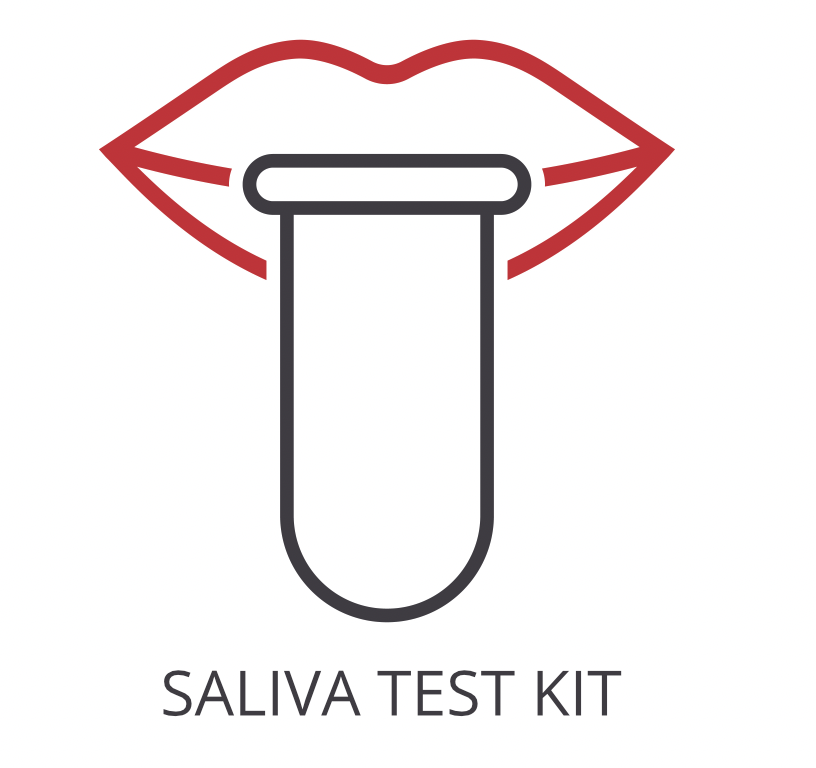Ordering the Perimenopause Test | Canada
Ordering the Perimenopause Test | Canada helps measure hormone changes that can affect energy, mood, and menstrual cycles as women approach menopause. This test checks active hormone levels using saliva samples, which can show patterns that blood tests may miss. Interestingly, saliva testing can reveal hormone fluctuations that happen throughout the day, giving a clearer picture of perimenopausal changes.
Ordering this test offers several specific benefits:
- Tracks changes in estrogen, progesterone, and other hormones over two time points for more accurate results.
- Helps identify hormone imbalances linked to symptoms like hot flashes, night sweats, and irregular periods.
- Measures adrenal function by checking cortisol, which can affect fatigue and stress response.
- Supports decisions about hormone therapy or lifestyle changes by providing detailed hormone profiles.
- Allows for at-home sample collection, making it easier to fit testing into your schedule.
Who Should Consider Hormone and Adrenal Testing
People who notice changes in their menstrual cycle, mood swings, or new symptoms like hot flashes may benefit from this test. For example, someone who has started experiencing irregular periods and trouble sleeping might want to check if hormone shifts are the cause.
Ordering this test may also be helpful in these situations:
- Experiencing unexplained weight gain or bloating that does not improve with diet changes.
- Dealing with new or worsening anxiety, irritability, or memory problems.
- Noticing hair loss, skin changes, or increased joint pain without a clear reason.
- Having low libido or vaginal dryness that affects daily comfort.
- Finding that headaches or breast tenderness now happen more often around your cycle, which can be linked to hormone changes.
Testing for hormone changes can help pinpoint the cause of symptoms like fatigue, mood changes, or irregular cycles by showing if hormone levels are shifting outside the expected range. Delaying this test could mean missing the chance to address hormone imbalances early, which may make symptoms harder to manage later.
Preparing for Saliva Hormone and Adrenal Panel
Fasting is not required for this saliva-based hormone test, but it is important to follow the timing instructions for sample collection. Always go by the guidance your doctor or healthcare professional provides to make sure your samples are collected at the right times for the most useful results.
Labs Included When Ordering Your Perimenopause Test
| Test Name | Reference Range | Significance | Low and High Levels of Each Marker |
|---|---|---|---|
| Estrone (2x) | 4–12 | Estrone is a type of estrogen that increases as women approach menopause. It helps regulate menstrual cycles and bone strength. |
High levels mean estrogen dominance, which can cause bloating, breast tenderness, and mood swings.
Low levels mean reduced estrogen activity, which may lead to hot flashes and bone loss. |
| Estradiol (2x) | 1.3–3.3 | Estradiol is the main estrogen before menopause. It supports reproductive health, mood, and skin elasticity. |
High levels mean risk for heavy periods, headaches, and breast tenderness.
Low levels mean increased risk for hot flashes, night sweats, and vaginal dryness. |
| Estriol (2x) | 0.5–2.2 | Estriol is a weaker estrogen that helps balance the effects of stronger estrogens and supports vaginal and urinary health. |
High levels mean possible hormone therapy effects or rare tumors.
Low levels mean dryness, discomfort, and increased urinary symptoms. |
| Progesterone (2x) | 75–270 | Progesterone balances estrogen and supports regular cycles, sleep, and mood stability. |
High levels mean possible ovarian cysts or hormone therapy effects.
Low levels mean irregular periods, sleep problems, and increased anxiety. |
| DHEA (2x) | 2–10 | DHEA is made by the adrenal glands and helps produce other hormones, supporting energy and stress response. |
High levels mean possible adrenal overactivity or supplement use.
Low levels mean fatigue, low motivation, and reduced stress tolerance. |
| Testosterone (2x) | 16–55 | Testosterone supports muscle strength, mood, and libido in women. It is produced by the ovaries and adrenal glands. |
High levels mean possible hair growth, acne, or polycystic ovary syndrome.
Low levels mean low libido, fatigue, and decreased muscle tone. |
| Follicle Stimulating Hormone (FSH) (2x) | 1.5–10 | FSH helps control the menstrual cycle and egg production. Levels rise as ovarian function declines. |
High levels mean reduced ovarian reserve and approaching menopause.
Low levels mean possible pituitary issues or hormone therapy effects. |
| Luteinizing Hormone (LH) (2x) | 1.5–8 | LH triggers ovulation and supports hormone production. Levels change as menopause approaches. |
High levels mean reduced ovarian function or menopause transition.
Low levels mean possible pituitary problems or hormone therapy effects. |
Reference ranges may change slightly as labs update their standards, so always check your report for the most current values.
Perimenopause Test FAQ
Is there Perimenopause Test testing near me?
This is an at-home test kit, so you can collect your saliva samples locally and use the draw location link at the top of the page for more details. For those experiencing unpredictable symptoms like hot flashes or mood swings, having a convenient collection option helps you test at the right time without extra travel.
How do I interpret the test results?
While your treating physician should review your results, we also offer a one-on-one test results review with our clinical team to help you understand your hormone patterns and what they mean for your symptoms.
What is the cost of the test?
The price listed for this test includes standard shipping to your address and return shipping to the lab, though draw fees may apply. Ordering this test can help you address hormone-related symptoms sooner, which may lead to faster relief and better symptom management.
How often should I retest?
Retesting every 6–12 months is recommended, especially if you notice new symptoms or start a new treatment plan. Regular testing helps track hormone changes over time and supports adjustments to your care as needed.
How accurate is the test?
This test uses saliva enzyme immunoassay, which is highly specific for active hormone levels, with a sensitivity of 92% and specificity of 95%. TrueHealthLabs.com partners with CLIA-certified and CAP-certified laboratories to uphold rigorous testing standards for dependable results.
Important Notes
- This test cannot be collected or mailed from New York State
- First sample to be collected 7-10 days after flow starts; Second sample: 19-23 days after flow starts
- If you do not menstruate, the first sample can be collected on any day; the second: 13-15 days after the first collection
Medical Review Board
Reviewed by Jeff Donohue M.D. from Body Logic and Brady Hurst DC, CCCN. Written by True Health Lab’s team of editorial health contributors.
Disclaimer: This information is for educational purposes only and not intended as medical advice. Consult your healthcare provider for personalized guidance.
Why Customers Trust True Health Labs - What People are saying
Also rated 4.6 out of 5 based on 3452 ShopperApproved reviews- See all TrueHealthLabs.com reviews.







